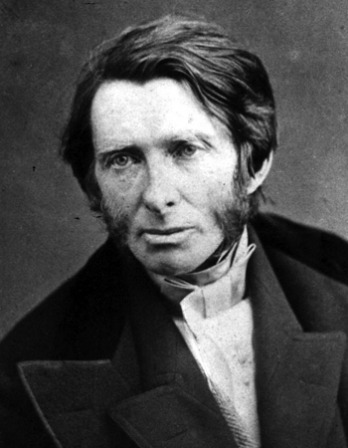I should certainly not have undertaken my tedious calculations if an extraordinary interest had not been connected with them.
In the Physical Society of Stockholm, there have been occasionally very lively discussions on the probable causes of the Ice Age. These discussions have, in my opinion, led to the conclusion that there exists as yet no satisfactory hypothesis that could explain how the climatic conditions for an ice age could be realized in so short a time as that which has elapsed from the days of the glacial epoch. The common view hitherto has been that the earth has cooled in the lapse of time. If one did not know that the reverse has been the case, one would certainly assert that this cooling must go on continuously. Conversations led me to make a preliminary estimate of the probable effect of a variation of the atmospheric carbonic acid on the temperature of the earth. As this estimation led to the belief that one might in this way probably find an explanation for temperature variations of 5 to 10 degrees Celsius, I worked out the calculation more in detail and lay it now before the public and the critics.
From geological researches the fact is well established that in Tertiary times there existed a vegetation and an animal life in the temperate and Arctic zones that must have been conditioned by a much higher temperature than the present in the same regions. The temperature in the Arctic zones appears to have exceeded the present temperature by about 8 or 9 degrees. To this genial time the Ice Age succeeded, and this was one or more times interrupted by interglacial periods with a climate of about the same character as the present, sometimes even milder. When the Ice Age had its greatest extent, the countries that now enjoy the highest civilization were covered with ice. This was the case with Ireland, Britain (except a small part in the south), Holland, Denmark, Sweden and Norway, Russia (to Kiev, Orel, and Nizhny Novgorod), Germany and Austria (to the Harz, Erzgebirge, Dresden, and Kraków). At the same time an ice cap from the Alps covered Switzerland, parts of France, Bavaria south of the Danube, the Tyrol, Styria, and other Austrian countries, and descended into the northern part of Italy. Simultaneously, too, North America was covered with ice on the west coast to the forty-seventh parallel, on the east coast to the fortieth, and in the central part to the thirty-seventh (confluence of the Mississippi and Ohio Rivers). In the most different parts of the world, too, we have found traces of a great ice age, as in the Caucasus, Asia Minor, Syria, the Himalayas, India, Tian Shan, Altai, Atlas, on Mount Kenya and Kilimanjaro (both very near to the equator), in South Africa, Australia, New Zealand, Kerguelen, Falkland Islands, Patagonia, and other parts of South America. By measurements of the displacement of the snow line, we arrive at the result—and this is very concordant for different places—that the temperature at that time must have been 4 to 5 degrees Celsius lower than at present. The last glaciation must have taken place in rather recent times, geologically speaking, so that the human race certainly had appeared at that period. Certain American geologists hold the opinion that since the close of the Ice Age, only some seven thousand to ten thousand years have elapsed, but this most probably is greatly underestimated.
One may now ask, How much must the carbonic acid vary according to our figures in order that the temperature should attain the same values as in the Tertiary and Ice Age respectively? A simple calculation shows that the temperature in the Arctic regions would rise about 8 to 9 degrees Celsius, if the carbonic acid increased to 2.5 or 3 times its present value. In order to get the temperature of the Ice Age between the fortieth and fiftieth parallels, the carbonic acid in the air should sink to 0.62—0.55 of its present value (lowering of temperature 4 to 5 degrees Celsius). The demands of the geologists, that at the genial epochs the climate should be more uniform than now, accords very well with our theory. The geographical annual and diurnal ranges of temperature would be partly smoothed away if the quantity of carbonic acid were augmented. The reverse would be the case (at least to a latitude of fifty degrees from the equator) if the carbonic acid diminished in amount. But in both these cases, I incline to think that the secondary action due to the regress or the progress of the snow covering would play the most important role. The theory demands also that, roughly speaking, the whole earth should have undergone about the same variations of temperature, so that according to it genial or glacial epochs must have occurred simultaneously on the whole earth. Because of the greater nebulosity of the Southern Hemisphere, the variations must there have been a little less (about 15 percent) than in the Northern Hemisphere. The ocean currents, too, must there, as at the present time, have effaced the differences in temperature at different latitudes to a greater extent than in the Northern Hemisphere. This effect also results from the greater nebulosity in the Arctic zones than in the neighborhood of the equator.
There is now an important question that should be answered, namely: Is it probable that such great variations in the quantity of carbonic acid as our theory requires have occurred in relatively short geological times?
From “On the Influence of Carbonic Acid in the Air upon the Temperature of the Ground.” This article, published in The Philosophical Magazine, was the first to calculate how increases in carbon dioxide in the atmosphere affect the temperature of the earth’s surface. Arrhenius, who won the Nobel Prize in Chemistry in 1903, revisited physicist John Tyndall’s theory that the absorption of energy by carbon dioxide in water—also known as carbonic acid—helps regulate atmospheric temperature. He is considered the first scientist to construct a model for the effect of industrial activity on global warming.
Back to Issue






